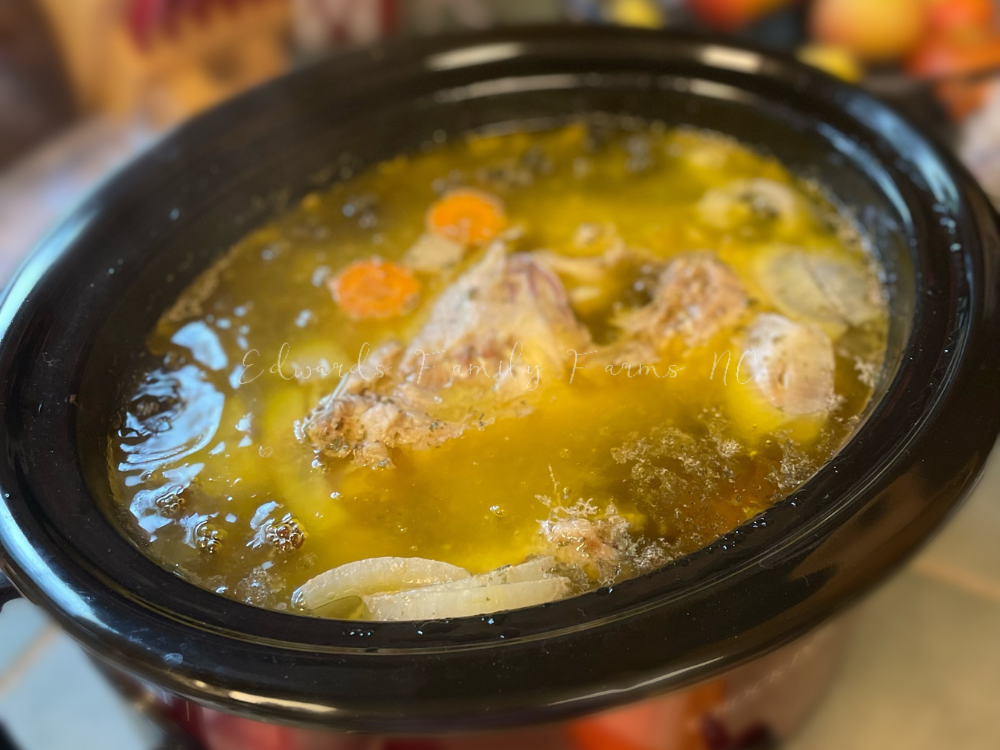5 Ways to Preserve Your Homemade Chicken Broth
posted on
October 12, 2022
Making homemade chicken broth is like capturing a hug in a jar.
Whether it's a rainy day comforter, a base for your favorite soup, or a secret weapon for rich sauces, a good broth is something every kitchen should have on hand.
But once you’ve simmered those bones to perfection, how do you keep that liquid gold at its best?
Here are five tried-and-true methods to preserve your homemade chicken broth so you can enjoy it long after the pot cools down.
1. Pressure Canning: The Pantry Staple
Pressure canning is the gold standard for preserving chicken broth for the long haul. This method ensures that your broth is shelf-stable and ready to go whenever you need it.
The high heat involved in pressure canning kills off any bacteria, yeast, or molds, making it safe to store your broth at room temperature for up to a year or more.
How to do it:
- Fill your sterilized canning jars with hot broth, leaving about an inch of headspace.
- Seal the jars with canning lids and rings.
- Process in a pressure canner at 10-15 PSI, depending on your altitude, for about 20-25 minutes for pint jars and 25-30 minutes for quarts.
Once done, let the jars cool, check the seals, and store them in a cool, dark place.
With this method, your broth will be ready to make soups, stews, or sauces whenever the craving hits.

2. Freezing: The Quick and Easy
If you’re looking for convenience, freezing your broth is a fantastic option.
Freezing locks in the fresh flavors and nutrients without the need for any special equipment beyond your freezer.
How to do it:
- Allow your broth to cool, then strain out the solids.
- Pour the broth into freezer-safe containers, leaving some space at the top to allow for expansion as it freezes.
- For easy portioning, consider using ice cube trays or silicone molds. Once frozen, pop the cubes out and store them in a freezer bag.
Properly stored, frozen broth will keep its flavor for up to six months.
Just thaw and use as needed, whether you're whipping up a quick gravy or adding depth to your favorite dish.
We like to freeze in ice cube trays for the winter and pull out a few to melt and drink in the morning as an immune boost!

3. Fat Cap Sealing: Old-School Fridge Storage (my fave)
One of the most old-fashioned and effective ways to store broth in the fridge for up to six months is by using the natural fat cap that forms on top as a seal.
This method works best with broth made from stewing hens, which tend to produce a thicker layer of fat.
How to do it:
- After making your broth, allow it to cool completely in the refrigerator.
- Once cooled, a layer of fat will solidify on the surface. Make sure this fat layer is at least one inch thick to effectively seal the broth underneath.
- Store the broth in the fridge, and as long as that fat cap remains intact, your broth will stay fresh for months.
When you’re ready to use it, simply remove the fat cap (which you can save for cooking!) and enjoy the rich, preserved broth beneath.

4. Dehydration: The Space-Saving Option
For those who are tight on storage space or just love a good DIY project, dehydrating your chicken broth is a great option.
Dehydrated broth can be stored in a small jar or bag and reconstituted with water whenever you need it.
How to do it:
- Start by simmering your broth down to a thick, concentrated liquid.
- Spread the reduced broth onto dehydrator trays lined with parchment paper, or use your oven set at its lowest temperature.
- Dry until the broth is completely brittle, then break it into pieces or grind it into a powder.
Store your dehydrated broth in an airtight container in a cool, dry place. A little goes a long way—just add boiling water to bring it back to life.
5. Homemade Bouillon: The Flavor Bomb
Turning your broth into homemade bouillon cubes or paste is another genius way to preserve it.
This method is perfect for those who want concentrated flavor in a compact form.
How to do it:
- Simmer your broth until it’s significantly reduced, thick, and syrupy.
- Pour the concentrated broth into ice cube trays for bouillon cubes or small jars for bouillon paste.
- Freeze the cubes, then transfer them to a freezer bag, or store the paste directly in the fridge.
With homemade bouillon on hand, you can easily add a burst of flavor to any dish—just dissolve a cube or spoonful in hot water, and you're good to go.

No matter which preservation method you choose, homemade chicken broth is a treasure worth keeping.
Whether you’re stocking your pantry, saving space, or just planning ahead, these five techniques ensure that a hearty bowl of broth is never far away.
Never tried your hand at homemade chicken broth? Click here for our full DIY chicken broth guide.






